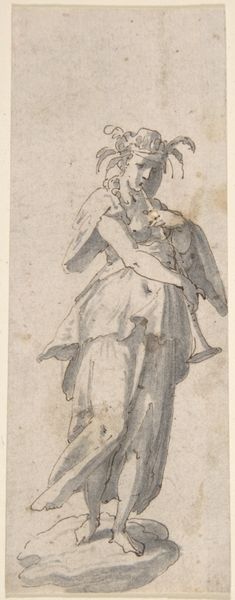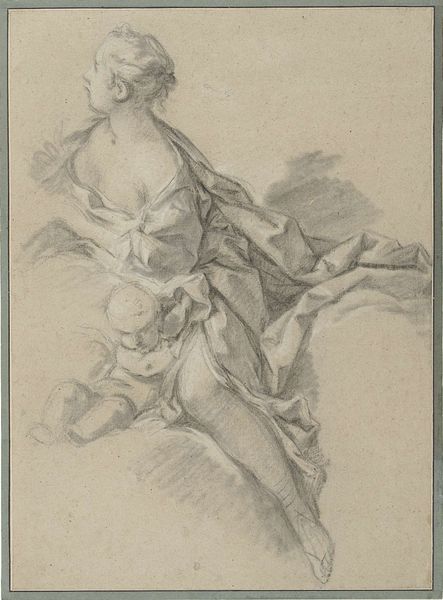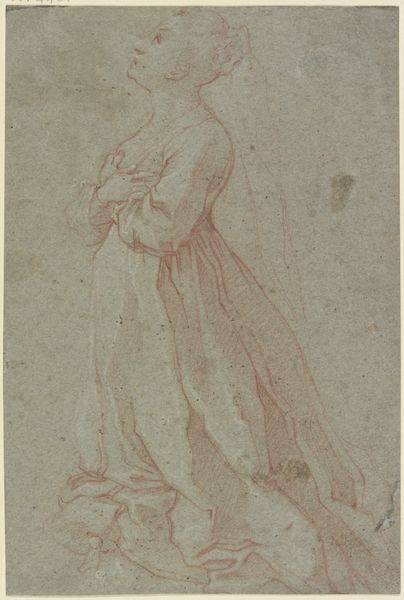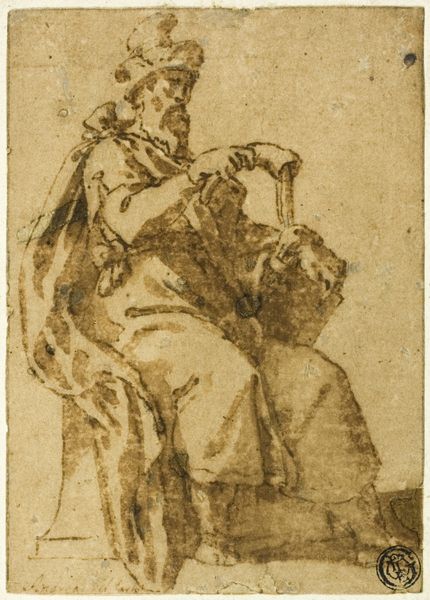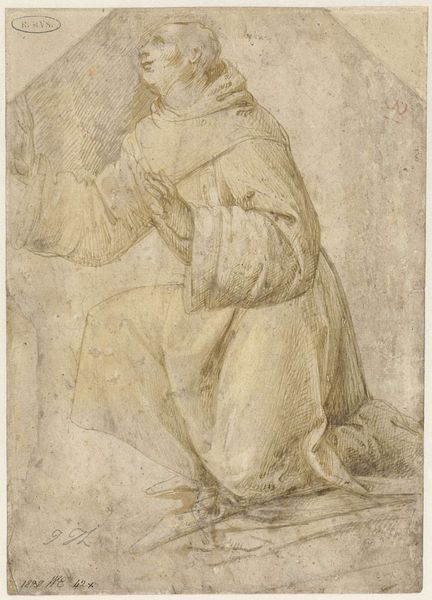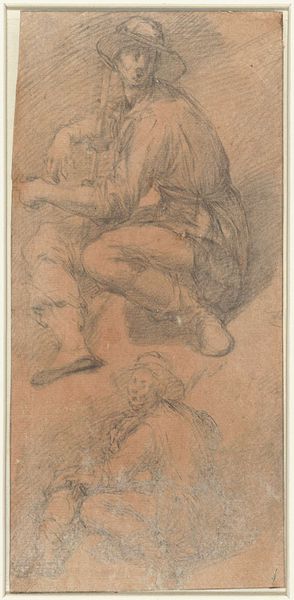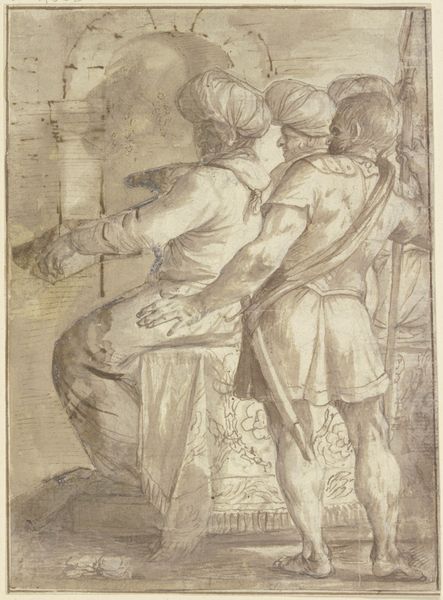
#
toned paper
#
light pencil work
#
pencil sketch
#
incomplete sketchy
#
charcoal drawing
#
possibly oil pastel
#
pencil drawing
#
underpainting
#
pastel chalk drawing
#
watercolor
Dimensions: height 330 mm, width 235 mm
Copyright: Rijks Museum: Open Domain
Curator: This is Alessandro Allori’s "Zittende man die zijn kous aantrekt," dating from about 1545 to 1572. It's rendered in what appears to be pencil on toned paper. What are your first thoughts? Editor: It feels like a glimpse into a private moment. The figure’s concentration, the slightly awkward posture... it’s humanizing, almost intimate, in its sketchiness. Curator: Exactly. It gives us insight into Allori’s working methods. We see the layering of strokes, the initial underdrawing still visible. The toned paper functions almost as a mid-tone, allowing the artist to build up highlights and shadows with a more limited material palette. It's a deliberate choice affecting the piece's luminosity and depth. Editor: And it keeps it fluid, doesn't it? He hasn't committed, nothing’s truly set in stone. The way the drapery flows— it’s more about suggesting form than meticulously defining it. It’s all potential energy, the prelude to a painting maybe? I feel like I'm eavesdropping on the artistic process itself. Curator: And considering its era, it's vital to examine how access to these materials – paper and pencils – was often tied to specific socio-economic structures, as well as artistic guilds. The labor required for paper-making alone would have impacted the accessibility and thus value associated with drawings like this one. Allori's skillful application of these materials elevated the drawing from mere preparation to a valuable object. Editor: You know, that perspective completely reframes my appreciation. Suddenly, it's not just about artistic expression but also about the unseen labor that supports such acts of creation. Makes me consider how easily we forget the sheer material effort behind things like the paper this image exists on. Curator: Indeed. Examining material realities often prompts us to reconsider what constitutes “high art." These "preliminary" sketches, often crafted from modest resources, represent key milestones in creative and economic development. Editor: Well, it’s certainly given me a deeper appreciation. Thanks for untangling the threads of materiality for me. Curator: My pleasure. It's enriching to realize that even seemingly simple sketches carry stories that touch on labor, material culture, and individual skill.
Comments
No comments
Be the first to comment and join the conversation on the ultimate creative platform.

